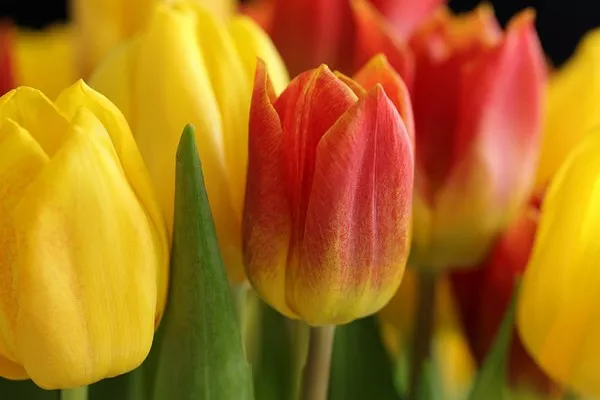Flowers have long captivated humanity with their beauty and fragrance. The olfactory sense, in particular, plays a significant role in how we perceive and appreciate the natural world. Among the myriad of floral scents, there is an ongoing fascination with identifying the flower with the strongest smell. This quest for olfactory supremacy has led researchers and enthusiasts alike on a journey through botanical gardens, remote landscapes, and laboratories. In this article, we delve into the intriguing world of fragrant blooms, exploring the contenders for the title of the flower with the most potent aroma.
Understanding Fragrance Intensity
Before diving into the contenders for the title of the strongest-smelling flower, it’s essential to understand what factors contribute to a flower’s fragrance intensity. The potency of a flower’s scent is influenced by various elements, including its chemical composition, environmental conditions, and individual perception.
Chemical Composition: The scent of a flower is primarily determined by the volatile organic compounds (VOCs) it emits. These compounds interact with receptors in our olfactory system, triggering the sensation of smell. Different flowers produce a diverse range of VOCs, leading to a wide array of fragrances.
Environmental Factors: Environmental conditions such as temperature, humidity, and air circulation can significantly impact the intensity of a flower’s fragrance. Warmer temperatures often enhance the release of VOCs, while stagnant air may result in a more concentrated scent.
Individual Perception: The perception of fragrance intensity varies among individuals due to genetic differences in olfactory receptors. What may be overpowering to one person could be subtle to another, making objective measurements of scent intensity challenging.
Contenders for the Strongest-Smelling Flower
Several flowers are renowned for their intense fragrance, captivating the senses with their alluring scents. While opinions may vary on which flower holds the title of the strongest-smelling, several contenders frequently emerge in discussions and research.
Rafflesia Arnoldii
Native to the rainforests of Southeast Asia, Rafflesia Arnoldii is often hailed as the world’s largest and smelliest flower. This remarkable plant produces blooms that can reach up to three feet in diameter and emit a scent reminiscent of rotting flesh. The odor serves to attract pollinators, primarily flies and beetles, that are drawn to the scent of decaying organic matter. While Rafflesia Arnoldii’s fragrance is undoubtedly potent, its fleeting nature—lasting only a few days—limits its overall impact.
Corpse Flower (Amorphophallus titanum)
The Corpse Flower, also known as Amorphophallus titanum or titan arum, is famed for its pungent odor, often likened to the smell of rotting flesh. Native to the rainforests of Sumatra, this giant flowering plant attracts pollinators with its foul scent, which reaches its peak intensity during the brief period of blooming. The Corpse Flower’s infrequent and unpredictable flowering events, coupled with its powerful aroma, have earned it a reputation as one of the world’s smelliest flowers.
Titanopsis calcarea
Titanopsis calcarea, a member of the Aizoaceae family native to South Africa, may not possess the size of Rafflesia Arnoldii or the infamy of the Corpse Flower, but it holds its own in the realm of fragrance intensity. This small succulent plant produces delicate yellow flowers with a scent often described as a combination of cloves and cinnamon. Despite its diminutive size, the fragrance of Titanopsis calcarea is remarkably potent, making it a popular choice among enthusiasts of succulent plants.
Ylang Ylang (Cananga odorata)
Ylang Ylang, native to Southeast Asia, is renowned for its sweet, floral fragrance with hints of jasmine and banana. The flowers of this tropical tree are prized for their essential oil, which is widely used in perfumery and aromatherapy. Ylang Ylang essential oil is believed to have calming and aphrodisiac properties, further enhancing its allure. While not as overpowering as the odors emitted by Rafflesia Arnoldii or the Corpse Flower, Ylang Ylang’s fragrance is unmistakably rich and captivating.
Tuberose (Polianthes tuberosa)
Tuberose, native to Mexico, is celebrated for its intoxicatingly sweet and floral scent. The flowers of this perennial plant are used extensively in the perfume industry, prized for their ability to impart a rich and complex fragrance. Tuberose’s aroma is often described as creamy, with notes of gardenia and jasmine. Despite its delicate appearance, the scent of Tuberose is robust and long-lasting, making it a popular choice for floral arrangements and fragrances.
Measuring Fragrance Intensity
Determining the strongest-smelling flower is a subjective endeavor, as fragrance intensity is influenced by individual perception and environmental factors. However, researchers have developed methods to quantify and compare the scent of different flowers objectively.
Gas Chromatography-Mass Spectrometry (GC-MS): GC-MS is a powerful analytical technique used to identify and quantify the volatile organic compounds present in a flower’s scent. By analyzing the chemical composition of floral fragrances, researchers can compare the relative intensity of different scents.
Olfactometry: Olfactometry involves using human subjects to assess the intensity of floral fragrances. Participants are exposed to various scents at controlled concentrations, and their responses are recorded to determine the perceived intensity of each fragrance.
Electronic Nose (E-Nose): An electronic nose is a device equipped with sensors capable of detecting and analyzing volatile organic compounds. E-Noses can be trained to recognize specific floral scents and quantify their intensity, providing an objective measure of fragrance potency.
Conclusion
In the realm of botanical wonders, the quest to identify the flower with the strongest smell is an ongoing pursuit fueled by curiosity and fascination. While contenders such as Rafflesia Arnoldii, the Corpse Flower, Titanopsis calcarea, Ylang Ylang, and Tuberose each boast unique and potent fragrances, determining a clear winner remains elusive. Fragrance intensity is influenced by a myriad of factors, including chemical composition, environmental conditions, and individual perception.
As researchers continue to explore the complexities of floral fragrances using advanced analytical techniques such as gas chromatography-mass spectrometry, olfactometry, and electronic noses, our understanding of the olfactory wonders of the natural world will undoubtedly deepen. Whether marveling at the putrid scent of the Corpse Flower or savoring the sweet fragrance of Ylang Ylang, one thing is certain—flowers continue to captivate our senses and inspire awe with their aromatic allure.


